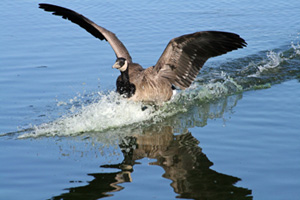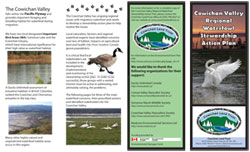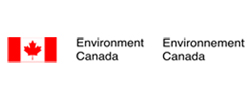
Migratory Waterfowl Stewardship Project
Waterfowl Stewardship Action Plan
Prepared for The Cowichan Valley
By S. Willmott The Cowichan Land Trust
March 2010
Acknowledgements Completion of the waterfowl action plan would not have been possible without the involvement of the following people: Dan Buffett – Ducks Unlimited Canada Biologist Art Martell – Former Director of Canadian Wildlife Society, Comox Valley Naturalists Dave Aldcroft – IBA Caretaker, Cowichan Bay Paul Fletcher – Duncan Councillor, Somenos Marsh Wildlife Society Eric Marshall – Cowichan Valley Naturalists Society Trystan Willmott – Madrone Environmental Services Ltd Jodie Krakowski – Cowichan Community Land Trust Amber Hiscock – Cowichan Community Land Trust Funding provided by Environmental Damages Fund, Environment Canada.
ii
Table of Contents
Table of Contents……………………………………………………………………………………. iii Executive Summary ………………………………………………………………………………… iv 1.0 Introduction ………………………………………………………………………………………..1 2.0 Waterfowl in the Cowichan Valley………………………………………………………….4 2.1 Key Issues, Prescribed Actions and Stakeholders ………………………………..4 2.1.1 Loss of Habitat – Wetlands and Agricultural Land …………………………..4 2.1.2 Resident (Non-migratory) Canada Geese………………………………………5 2.1.3 Migratory Waterfowl and Agricultural Land …………………………………….6 2.1.4 Future Funding ………………………………………………………………………….7 2.2 Additional Identified Issues for Potential Future Action ………………………….7 2.2.1 Lack of Recognized Documentation of Known Significant Habitat……..7 2.2.2 Decreasing Numbers of Cavity Nesters …………………………………………8 2.2.3 Resident Mute Swans …………………………………………………………………8 3.0 Conclusion …………………………………………………………………………………………9 Appendix 1 Christmas Bird Count Data ……………………………………………………..10 References ……………………………………………………………………………………………15
iii
Executive Summary
The Cowichan Land Trust facilitated a meeting of local stakeholders and regional waterfowl experts as part of the Migratory Waterfowl Stewardship Project. As a result, we identified three significant regional waterfowl issues, involving unique bird populations and seasonal timing, which lead to negative impacts around the Cowichan Valley: 1) Loss of foraging habitat; 2) Impacts of migratory waterfowl on agricultural land; and 3) A considerable increase in the number of resident (non-migratory) Canada Geese, resulting in the contamination of water resources and public areas. These are distinct problems that require public education to increase awareness and to highlight specific causes and management needs. The objectives of this initial stewardship action plan are: to clearly identify the concerns regarding waterfowl in the region; prescribe actions which have proven effective in other regions; and engage local stakeholders to form an advisory committee that will oversee implementation of the plan. In order for this stewardship action plan to be successful, sustained support is needed from local, provincial and federal government, First Nations, the agricultural community, regional experts, naturalists and local residents. The Cowichan Land Trust can play a focal role in administration, coordination, establishing the advisory committee, developing community linkages, and facilitation of a local waterfowl advisory committee, once created. Sustained financial support is needed to effectively implement the stewardship action plan and monitor its effectiveness.
iv
1.0 Introduction
The Cowichan Valley falls within the Pacific Flyway and provides important foraging and breeding habitat for waterfowl during migration. There are two local designated Important Bird Areas (IBA): Somenos Lake and the Cowichan Estuary (Figure 1), which have international significance for their high value as waterfowl habitat (Bird Studies Canada, 2010). A Ducks Unlimited assessment of estuarine habitats in British Columbia ranked the Cowichan and Chemainus estuaries in the top class (Ryder et al. 2007). Many other highly valued and unprotected waterfowl habitat areas occur in the region. Extensive data on bird populations in the region, including impacts and changes over time have been collected and documented for the Cowichan Valley. Local naturalists have been conducting Christmas Bird Counts in the region since 1970 (Appendix 1). Migratory waterfowl were monitored this past winter (2009/2010) through weekly surveys by a committed group of volunteers, whose continuous monitoring has provided data to document trends and seasonal patterns (Figure 2). This local knowledge of bird populations, temporal changes and habitat provides an excellent foundation for developing a regional stewardship action plan. The Cowichan Valley has ongoing regional issues with migratory waterfowl and needs to develop a stewardship action plan to help resolve the issues. Local naturalists, farmers and regional waterfowl experts have identified concerns over loss of habitat, impacts on agricultural land and health risks from resident Canada goose populations. It is critical that local stakeholders are included in the development, implementation, and monitoring of the stewardship action plan. In order to be successful, those groups with a vested interest must be active in addressing, and ultimately solving, the problems.
1
2
3
2.0 Waterfowl in the Cowichan Valley
Regional waterfowl issues were identified at a community meeting involving several of the important stakeholders in the Cowichan Valley. Representatives included: Cowichan Land Trust, Madrone Environmental Services, Ducks Unlimited Canada, the former Director of the Canadian Wildlife Service and expert consultant on bird and waterfowl management and habitat issues, Duncan City Council, Somenos Marsh Wildlife Society, Cowichan Valley Naturalists Society, IBA Caretaker for Cowichan Bay, and Comox Valley Naturalists. The Cowichan Agriculture Society (CAS) was unable to attend the initial meeting; however, the CAS have been involved in discussions and developing the content of the stewardship action plan.
2.1 Key Issues, Prescribed Actions and Stakeholders
Each of the identified regional issues in the Cowichan Valley can be associated with a list of concerns, prescribed actions and identified stakeholders:
2.1.1 Loss of Habitat – Wetlands and Agricultural Land
a. Concerns Loss of existing wetlands and changing agricultural practices reduces waterfowl habitat. More intensive agriculture consisting of berry production, nurseries or an increase in farm buildings, such as greenhouses displaces areas used for growing vegetables, grains and grass, reducing food availability for waterfowl. Loss of habitat will concentrate existing populations of waterfowl in remaining habitat. Habitat loss is occurring throughout Vancouver Island and the Lower Mainland / Fraser Valley. b. Prescribed Actions Secure or preserve the condition of existing wetlands through acquisition, conservation covenants, and land owner agreements or stewardship pledges. Provide financial incentives and technical support to maintain traditional agricultural practices. Financial support could include cost sharing for cover crops and relay crops, or covering costs associated with implementing farm practices in Environmental Farm Plans. Develop effective local bylaws to protect wetlands.
4
c.
Identified Stakeholders Ministry of Agriculture and Lands Local planners and engineers Local residents and naturalists Local farmers
2.1.2 Resident (Non-migratory) Canada Geese
a. Concerns Local year-round overpopulation. Fecal waste creates water pollution and recreational field contamination, posing a public health concern. Intensive consumption of Carex marshes by resident geese, which decreases the function of the marshes and leads to the destruction of valuable fish and wildlife habitat. Consumption of spring seeded corn, spring seeded forage crops, grains and other crops on agricultural lands. Resident Canada goose over-population is occurring throughout Vancouver Island and the Lower Mainland/ Fraser Valley b. Prescribed Actions Form an advisory committee comprised of local stakeholders. Obtain long-term support from regional and provincial governments. Document the extent of water pollution, to gain a greater understanding of potential health risks. Reduce the population of resident Canada geese. A cull would significantly reduce the problem; however, governments and public would both need to support this option. Education of the general public and local governments regarding the issue and potential solutions. Many farmers, hunters, provincial and federal government wildlife organizations are aware of the issue, but support from the local government and public is needed to carry out mitigation. Recommend changes to the hunting season, which is a provincial and federal government responsibility. The traditional hunting season beginning in mid October tends to target the migrating geese rather than the resident population as it can be hard for hunters to distinguish between resident and migratory geese. Earlier hunting periods in September are provided to target resident
5
Recommendations to allow local governments to approve ‘discharge of firearms’ where appropriate. Identify regional areas where waterfowl should be deterred and where waterfowl would be desired. Encourage more consistent egg addling in key areas to limit population growth as an ongoing management action. Other supplemental actions include use of trained dogs in specific areas (e.g. parks), and the use of deterrents that can be moved periodically, such as 45 gallon drums on posts, scarecrows, and large plastic bags draped over Tstakes.
c. Identified Stakeholders Canadian Wildlife Service CVRD, Municipality of North Cowichan Ministry of Agriculture and Lands Ministry of Environment Local residents Regional farmers Local Fish & Game / Rod & Gun clubs
2.1.3 Migratory Waterfowl and Agricultural Land
a. Concerns Paddling of soil by swans to forage on potatoes causes soil compaction and flooding. Large numbers of birds on a farm causes overgrazing, especially in the spring, impacting food production for livestock. Birds move throughout the season, using different areas in early and late winter. b. Prescribed Actions Form an advisory committee comprised of local stakeholders. Obtain support from Cowichan Agricultural Society Acquire support from regional government. Encourage more widespread adoption and implementation of the Environmental Farm Plan. Prevent and mitigate the impacts of migratory waterfowl by using any of several stewardship opportunities, such as lure crops, cover crops and improving soil drainage. There are examples of partnership and ways to deliver these programs in Comox and Delta.
6
Compensation where prevention and mitigation have not been successful. Both Comox and Delta have initiated projects that assess the impacts and compensate farmers for a portion of the impacts from migratory waterfowl. It is hoped this program will become a provincial program.
c. Identified Stakeholders Canadian Wildlife Service Regional farmers CVRD and Municipality of North Cowichan
2.1.4 Future Funding
a. Concerns Requirement for sustained funding to support an organization to implement and monitor the effectiveness of the action plan through coordinating local stewardship groups. b. Prescribed Actions Obtain ongoing funds to continue waterfowl stewardship.
2.2 Additional Identified Issues for Potential Future Action
Through discussions with the waterfowl representatives, three other waterfowl issues were raised. The most urgent issues have been the main focus of this document. However, it is important to record these additional concerns for consideration in the future.
2.2.1 Lack of Recognized Documentation of Known Significant Habitat
a. Concerns The region has many highly valuable but unprotected waterfowl habitat areas. For example, Quamichan Lake has BC’s largest population of overwintering Ruddy Duck. b. Prescribed Action Use data from local bird surveys to support the identification, recognition and appropriate protection of important habitat.
7
2.2.2 Decreasing Numbers of Cavity Nesters
a. Concerns Loss of potential nesting sites and decreasing quality of foraging habitat. b. Prescribed Action Use data from local bird surveys to gain an understanding of population dynamics and to identify important habitat areas. The data could be used to help protect nesting/foraging habitat.
2.2.3 Resident Mute Swans
a. Concerns Grazing of eelgrass transplant sites in Cowichan Bay by resident mute swans. Numbers of resident Mute Swans might increase and add to the problems posed by resident Canadian Geese. b. Prescribed Actions Monitor regional populations of Mute Swans and identify potential environmental impacts.
8
3.0 Conclusion
Residents, local governments and regional waterfowl experts recognize that a regional waterfowl stewardship action plan is needed for the Cowichan Valley. Clear issues about migratory and resident waterfowl have been identified and documented. This initial stewardship action plan represents a preliminary, but essential, step in the future implementation of workable solutions. It is expected that the numerous stakeholders will take the information presented in this document and use it as a catalyst to launch a focused, long term plan. Sustained and organized effort will be required on the part of all stakeholders to enable the creation of an effective advisory committee that is successful in securing the required funding. We hope that success stories from elsewhere in the province will help foster a desire to achieve similar results in the Cowichan Valley. Successful waterfowl management in other regions of the province, and throughout North America, should be used as a source of knowledge to help shape an effective stewardship action plan for the Cowichan Valley.
9
Appendix 1 Christmas Bird Count Data
Number of Geese from 1970 to 2007
4000 Canada Goose Greater White-fronted Goose 3500
3000
Number of Birds
2500
2000
1500
1000
500
0
19 70 19 88 20 00 20 02 19 72 19 84 20 04 19 86 19 90 19 92 19 94 19 74 19 76 19 78 19 80 19 82 19 96 19 98 20 06
Year
10
Number of Swans from 1970 to 2007
1400 Trumpeter Swan Mute Swan 1200
1000
Number of Birds
800
600
400
200
0
70
72
78
4
80
76
2
84
86
88
0
92
94
96
8
00
02
4 20 0
19 7
19 8
19 9
19 9
Years
Number of Dabbling Ducks from 1970 to 2007
6000 American Wigeon Northern Pintail 5000 Green-winged Teal Mallard
4000 Number of Birds
3000
2000
1000
0
0 2 4 6 8 0 2 4 6 8 0 2 4 6 8 0 2 4 20 0 19 7 19 7 19 7 19 7 19 7 19 8 19 8 19 8 19 8 19 8 19 9 19 9 19 9 19 9 20 0 20 0 20 0 19 9 6
Years
11
20 0
19
19
19
19
19
19
19
19
19
19
19
20
20
6
Number of Diving Ducks from 1970 to 2007 Chart 1 of 3
1400 Surf Scoter White-winged Scoter 1200 Common Goldeneye Barrow’s Goldeneye 1000
Number of Birds
800
600
400
200
0
4 2 0 2 4 0 2 6 0 8 8 6 4 6 8 19 7 19 7 19 8 19 8 19 9 19 8 19 8 19 9 19 7 19 9 0 2 20 0 20 0 20 0 19 7 19 7 19 8 19 9 4 20 0 19 9 6
Years
Number of Diving Ducks from 1970 to 2007 Chart 2 of 3
2500 Common Merganser Hooded Merganser Red Breasted Merganser 2000 Greater Scaup Lesser Scaup
Number of Birds
1500
1000
500
0
19 72
19 70
19 74
19 76
19 80
19 78
19 82
19 84
19 88
19 86
19 90
19 92
19 96
19 94
19 98
20 00
20 04
20 02
Years
12
20 06
Number of Diving Ducks from 1970 to 2007 Chart 3 of 3
1800 Ruddy Duck 1600 Bufflehead Ring-necked Duck 1400 Canvasback
1200 Number of Birds
1000
800
600
400
200
0
19 98 19 96 20 00 19 86 19 88 19 76 19 78 19 70 19 72 19 74 19 80 19 82 19 84 19 90 19 92 19 94 20 02 20 04 20 06
Years
Number of Loons & Cormorants from 1970 to 2007
1000 Double-crested Cormorant Common Loon 800 Pacific Loon Red-throated Loon
900
700 Number of Birds
600
500
400
300
200
100
0
19 70
19 74
19 72
19 84
19 86
19 88
19 90
19 76
19 78
19 80
19 92
19 98
20 00
20 02
Year
13
19 94
19 96
20 04
20 06
19 82
Number of Grebes from 1970 to 2007
8000 7000 6000 Number of Birds 5000 4000 3000 2000 1000 0 1970 1972 1974 1976 1978 1980 1982 1984 1986 1988
Western Grebe Horned Grebe Red-necked Grebe Pied-billed Grebe
1990
1992
1994
1996
1998
2000
2002
2004
Western Grebe 2006
Year
14
References
Ryder, J.L., Kenyon, J.K., Buffett, D., Morre, K., Ceh, M. and Stipec K. 2007. An Integrated Biophysical Assessment of Estuarine Habitats in British Columbia to Assist Regional Conservation Planning. Environment Canada. Technical Report Series Number 476 2007. Bird Studies Canada – http://www.bsc-eoc.org
15
Project Sponsors
Thanks to all those who lent their photos to this site.
Resources

Click Here to download a brochure about the Cowichan Valley Regional Waterfowl Stewardship Action Plan

